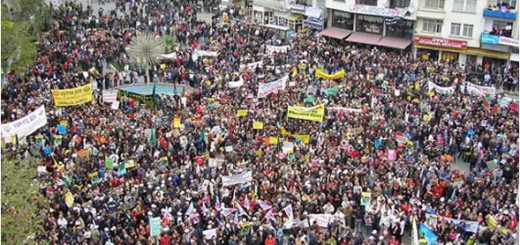Advanced Thermal Reactor Fails Strength Tests Nuke Info Tokyo 117
On 10 February 2007 the Mainichi Shimbun reported that in the course of tests being carried out prior to decommissioning the Fugen Advanced Thermal Reactor (ATR, 165 MW) it was discovered that concrete walls on an auxiliary building did not meet the required strength standard.
Fugen is owned by the Japan Atomic Energy Agency (JAEA) and is located in Tsuruga in Fukui Prefecture. It commenced full operations in March 1979 and was finally shut down in March 2003. Removal of fuel was completed in August 2003. This fuel is gradually being transferred to JAEA’s reprocessing facility in Tokai, Ibaraki Prefecture. The plan is to transfer all the fuel by 2011.
On 7 November 2006, JAEA submitted its decommissioning plan for Fugen to the Ministry of Economy Trade and Industry (METI). It is expected that approval will be given in the near future. According to the plan, equipment surrounding the reactor will be dismantled and removed by about 2017. The reactor itself will be dismantled and removed by about 2026, while the buildings will be dismantled and removed by about 2028.
Waste arising during decommissioning is estimated to include 51,300 tons of radioactive waste and 141,100 tons of non-radioactive waste. Over 177,000 tons of concrete from underground structures and foundations are not targeted for disposal. If this is included, altogether around 370,000 tons of waste will be generated. Of the radioactive waste generated so far, about 600 tons is below the “clearance level”. After decontamination is completed it is estimated that about 45,900 tons will be below this level. However, there is still no agreed destination for this waste.
Fugen is now being used for various experiments. One such experiment is being carried out for the Ministry of Education, Culture, Sports, Science and Technology (MEXT) by the Nuclear Safety Technology Center. This experiment is entitled “Experiment to demonstrate the safety of disposal measures for experimental and research reactors”. It measures the radioactivity contained in concrete and metals and collects data on the radioactivity of waste from dismantled equipment. Another experiment related to the decontamination of radioactivity in metals was reported in the media on January 26th. It is part of a survey on decontamination technology being carried out by JAEA under commission from MEXT.
The experiment into the strength of concrete mentioned at the beginning of this article was carried out by JAEA under commission from the Japan Nuclear Energy Safety Organization (JNES). It is part of a wider research program subsidized by METI under which JNES is researching the effects of aging. The intention is that information gathered from samples taken from Fugen before it is decommissioned will be used to inform responses to aging in other reactors.
 |
| Cartoon by Shoji Takagi |
Thirty-four 10 cm diameter by 25 cm long samples were taken at six locations from the walls of buildings. The walls ranged from 30 cm to 150 cm thick. The results of destructive tests showed that 25 samples at 5 locations failed to meet the required strength standards. The weakest sample was only half the required strength. This was despite the fact that non-destructive tests carried out immediately before the destructive tests showed that the samples met the required standards.
One would have thought that the obvious conclusion to be drawn was that this experiment demonstrates once again that non-destructive tests are not to be trusted. However, the regulator, the Nuclear Industrial and Safety Agency (NISA), has perversely chosen to doubt the destructive tests. It claims that JAEA entrusted the actual testing to a company which did not have the necessary expertise and that the company might have made a mistake in the sampling. In making this claim, NISA is arbitrarily complicating the issue by pinning the blame on JAEA’s long-standing practice of relying on subcontractors.
Indeed, NISA seems more concerned about the fact that the results were reported in the media than the results themselves. Citing JAEA’s lax supervision, it has requested JNES not to commission work from JAEA in the next fiscal year. Residents of Fukui Prefecture have protested that this is another manifestation of NISA’s proclivity for attempting to cover up problems, rather than face them head-on.
Baku Nishio (CNIC Co-Director)



